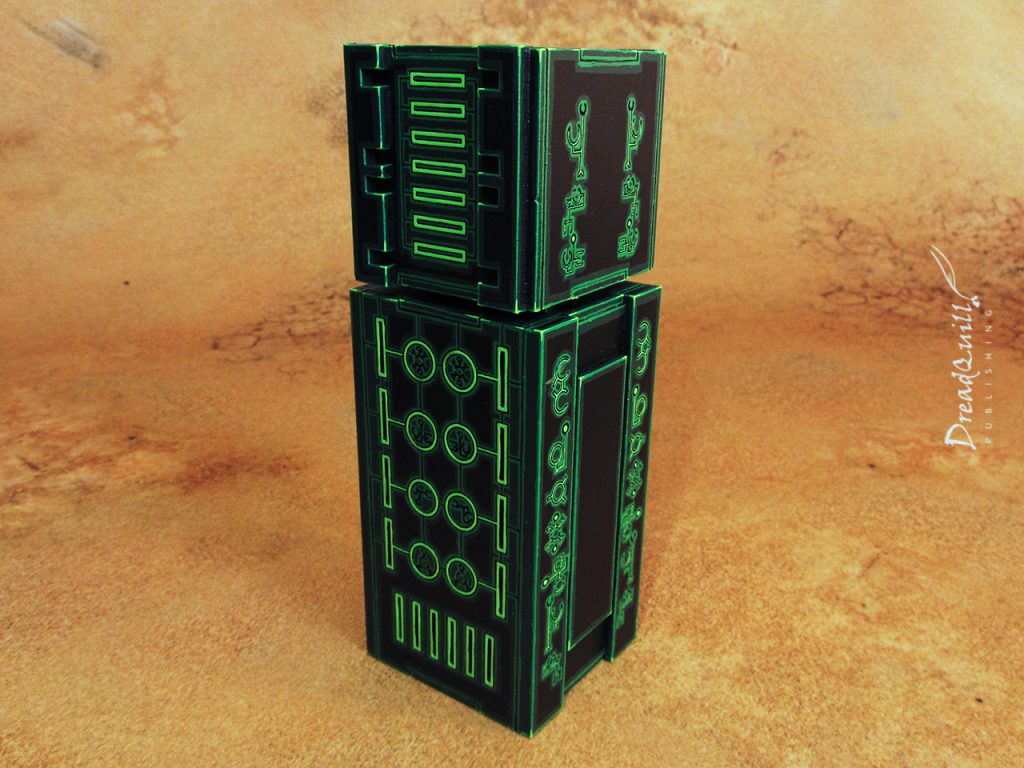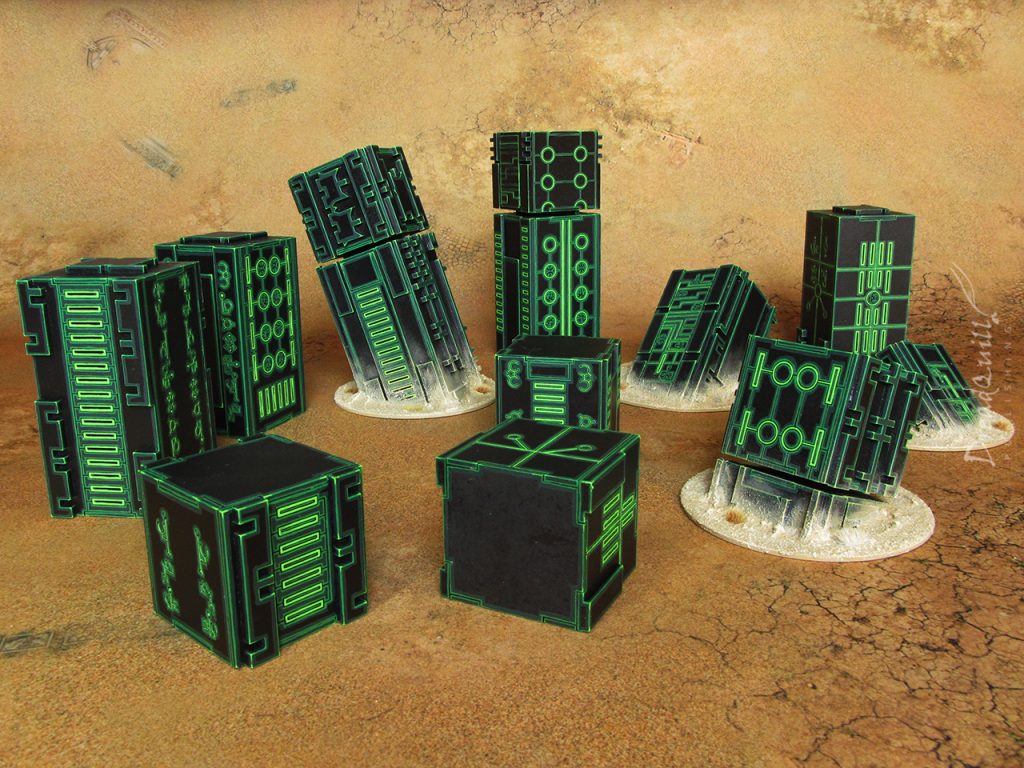
As part of a recent scenery purchase from a local terrain company, I also snagged some obelisks from Wargame Model Mods’ weird and wonderful Necrotech range. I’d been meaning to do some proper weird alien terrain as a palette cleanser from all the underhive grime I’d been building, and these looked just the ticket.
Getting more for your money
I wanted enough to reasonably scatter across a 6×4 board, and one pack of Obelisk blocks would give me plenty to litter the tabletop with. They arrived in a series of neat little bundles, already punched out.
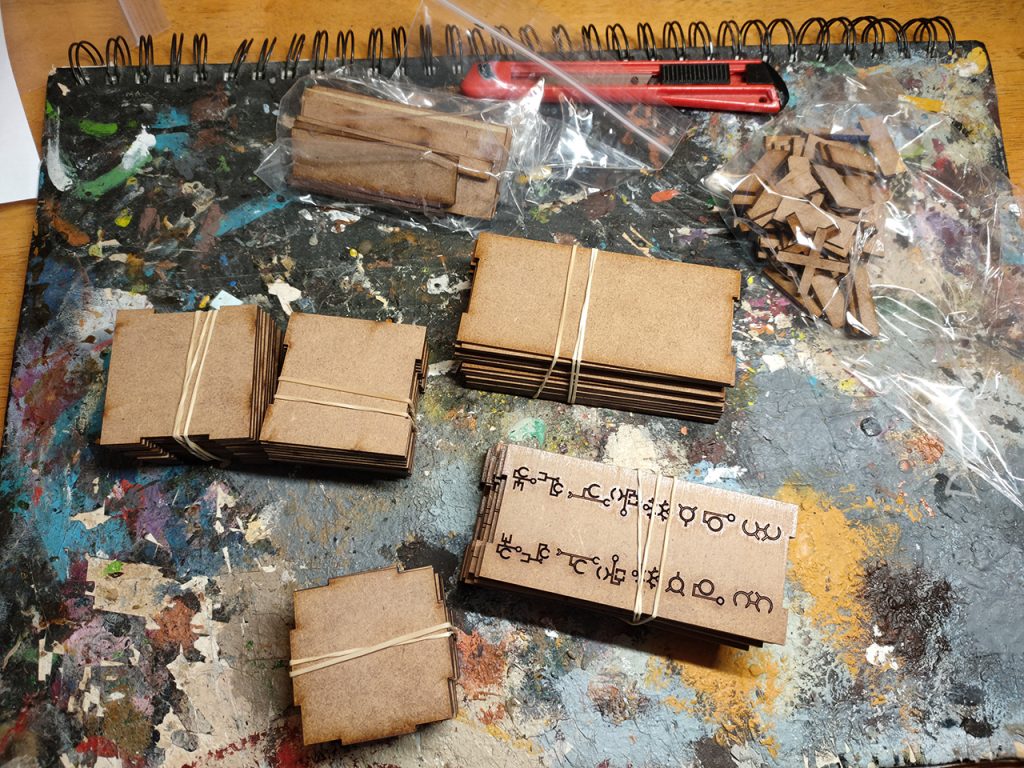
They fit together very pleasingly, and I was surprised at how big they were. I didn’t get much of a sense of scale from the original images, and even the smaller blocks were quite imposing against a 28mm guardsman.
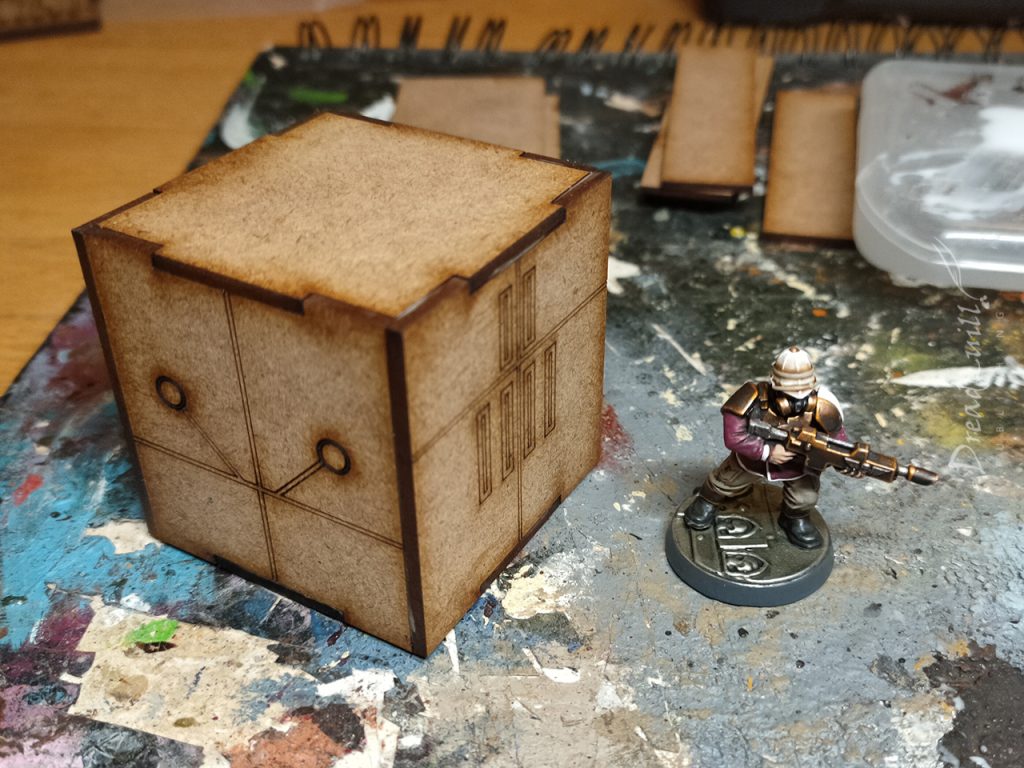
I hadn’t read the description properly and didn’t realise that half the panels had no detail on them – presumably so you could stick them together into a mega-block like the one advertised.
I wasn’t going to do that with this set (although I may do one in future), I wanted as many individual blocks as possible to have as much variation on the tabletop, including some half-buried in the ground.
I’d need to come up with some clever trick to detail the plain panels I had.
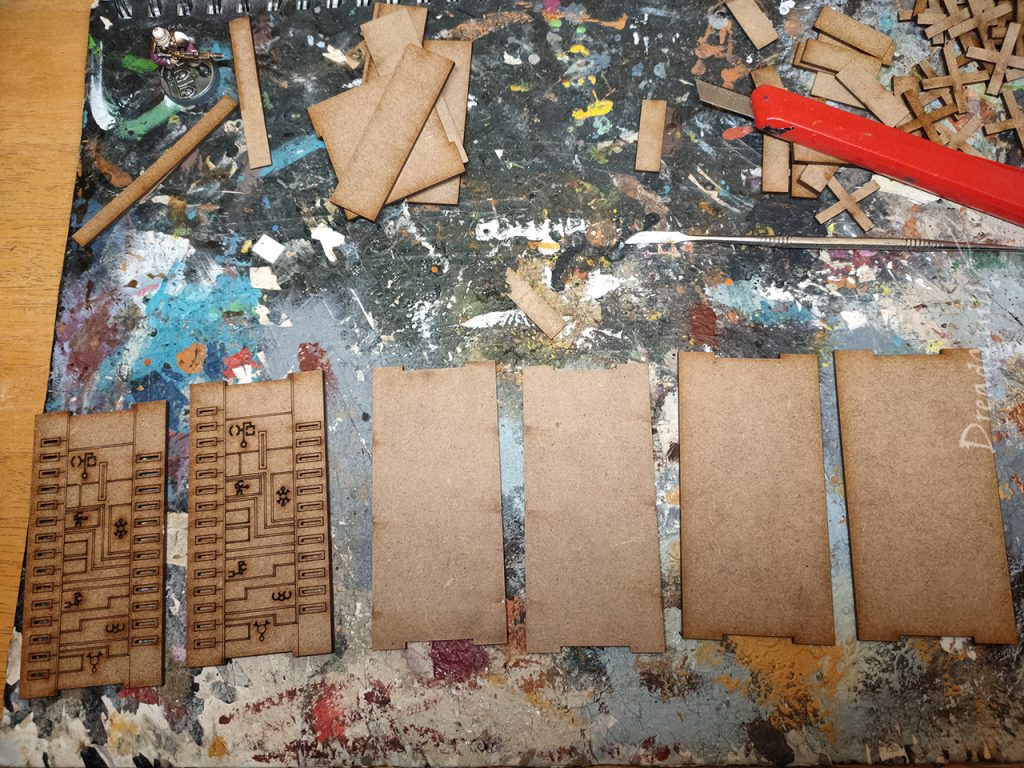
The kit came with an assortment of smaller flat spacers for gluing the obelisks together into a mega-lith, but for me they would be extra panels to fill out the flat surfaces.
By taking two detailed panels and cutting them up, I could arrange those cut out pieces across four plain panels. With some help from some spacers, I now have four detailed panels!
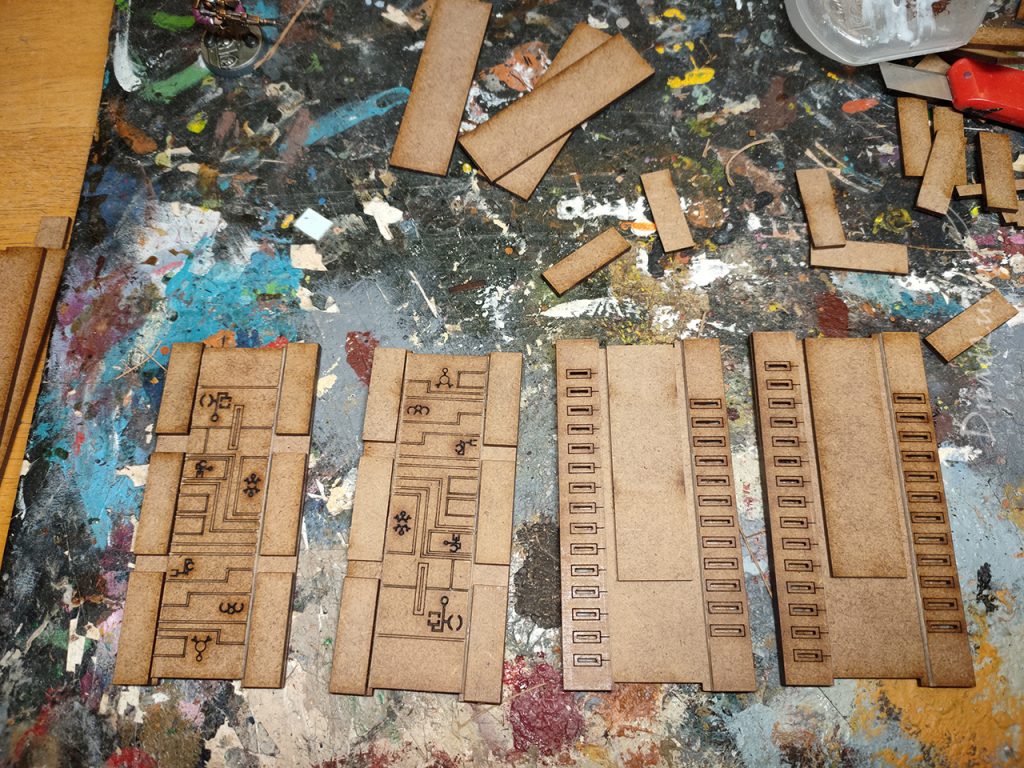
As an absolute mad lad I also own an MDF bits box, filled with the weird inserts and offcuts from MDF sprues that I use for detailing and greebling. They came in perfectly handy for this task.
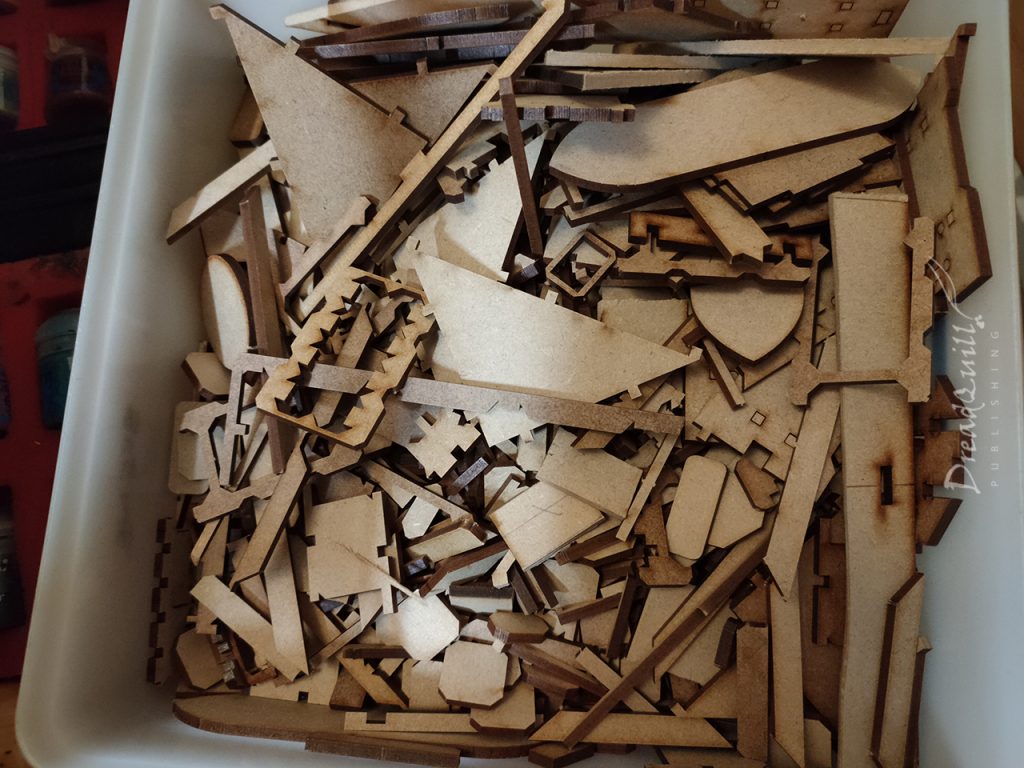
I picked out a collection of necron-looking bits that would give me some nice clean edges to show up the colour scheme I was planning.
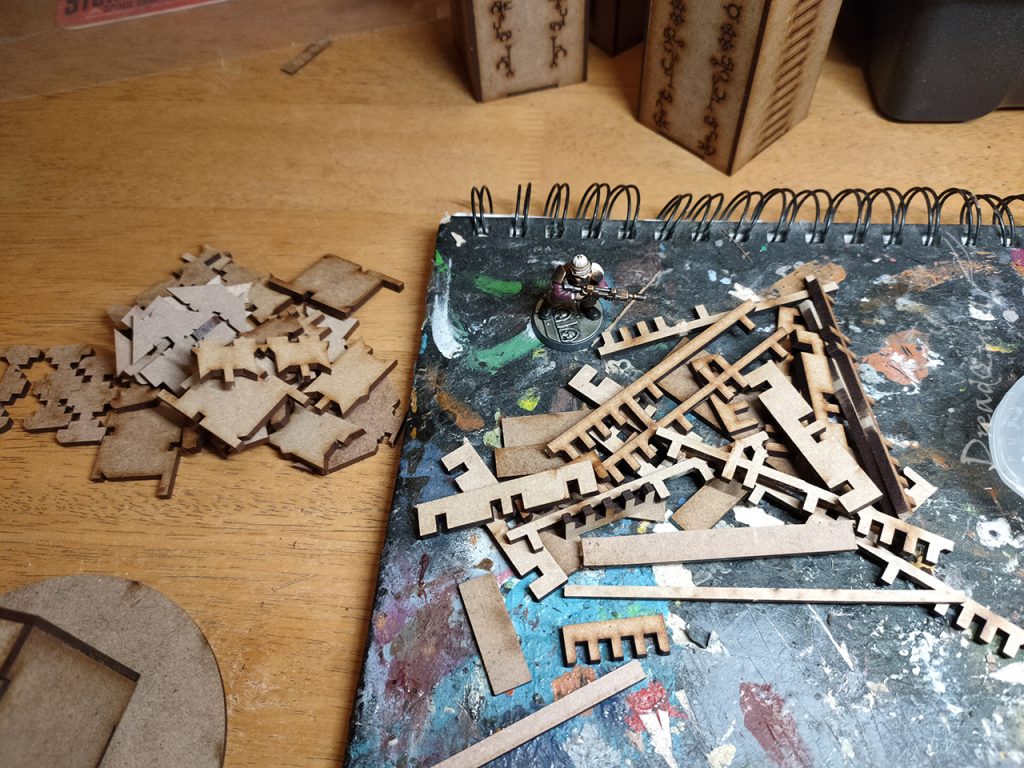
All the main blocks were assembled first to get an idea of how much flat space I needed to cover. And then a terrible thought struck me. What if I could make one block… into two?
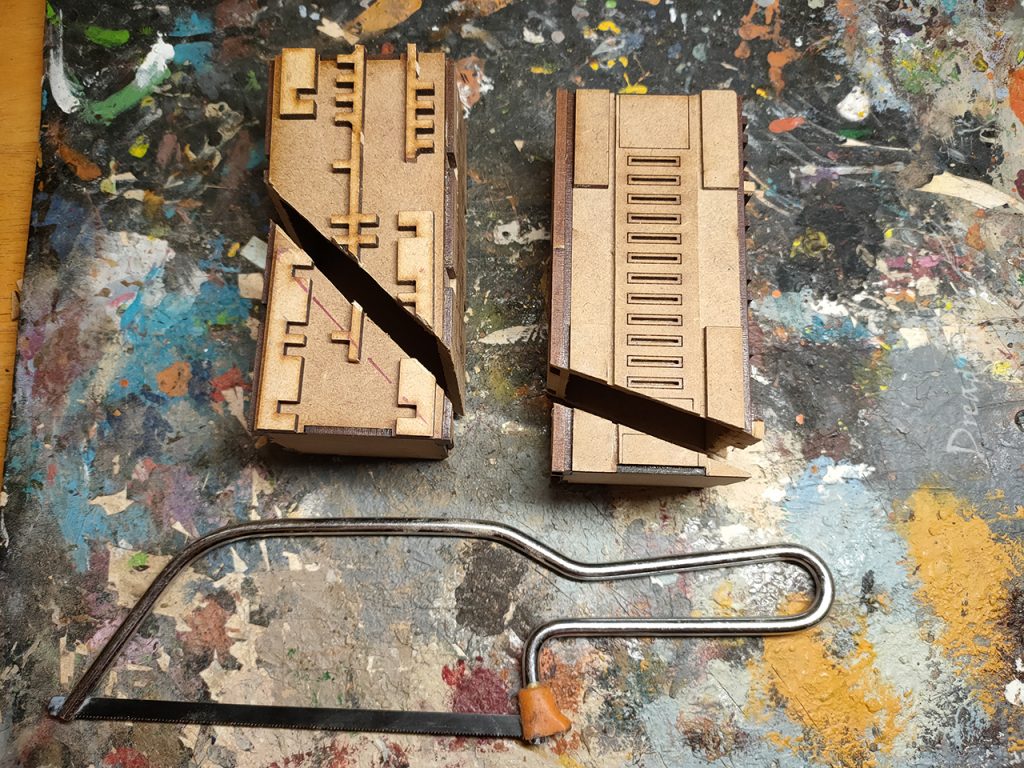
Several intense hacking minutes later and I’d made four bits of scatter out of two obelisks. I wanted them to look sunk in the sand, either abandoned or just being unearthed.
I stuck them to some round bases and smeared a load of pre-mixed filler around the join to look like a buildup of sand.
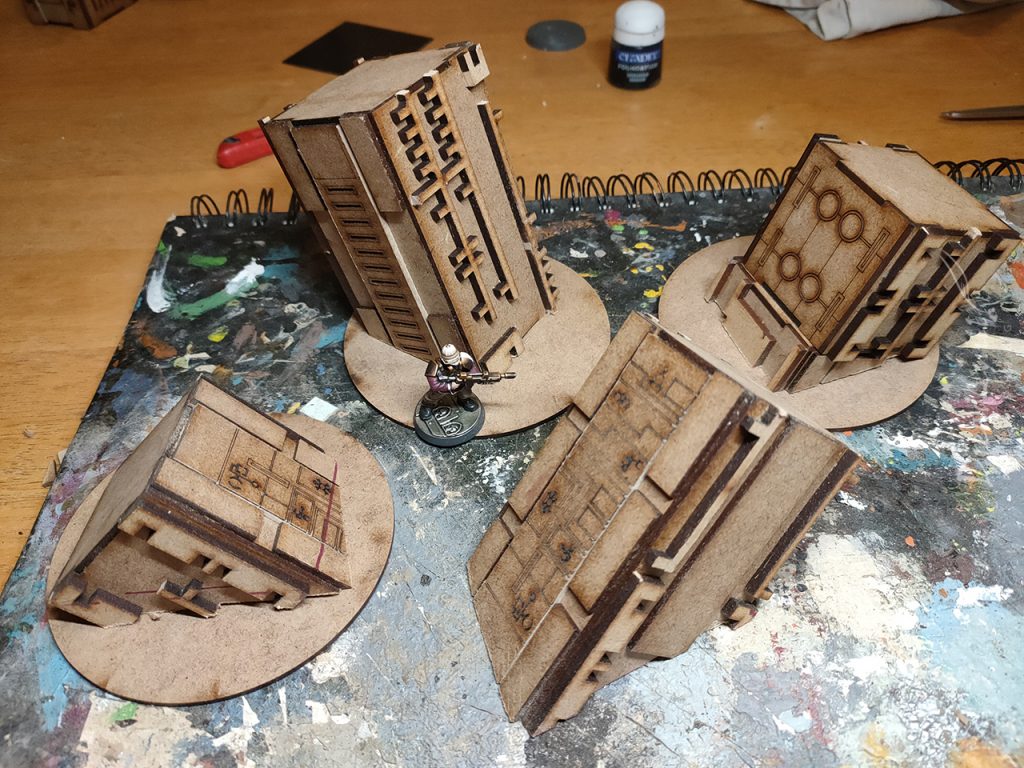
Some of them got extra smaller blocks added on top to imitate the obelisks at different stages of decay. It was also at this point that it really hit home how big all of these were going to be, and how tricky they would be to paint…
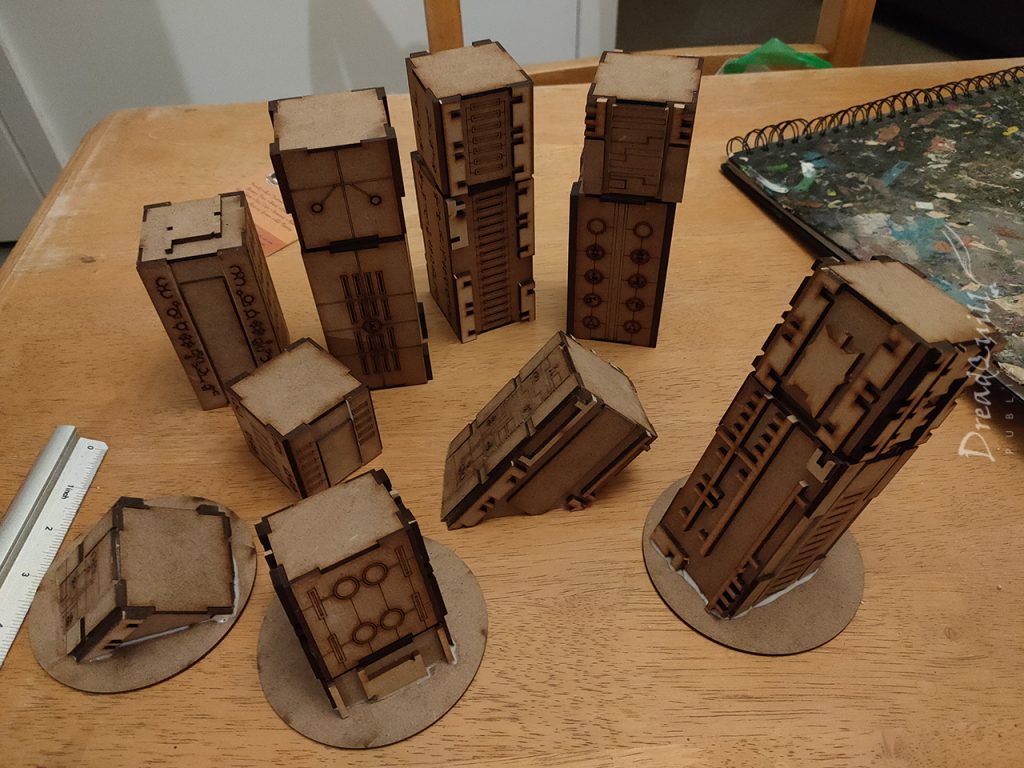
And that was all of them assembled! A thoroughly enjoyable kit to build and very modular, especially if you’re a hobby sadist like myself who likes to squeeze more content out of their kits.
The only thing I’d like to see moving foward is the option to purchase either/or when it comes to the non-detailed plates. Perhaps an option to upgrade/replace to fully detailed plates so you can build 16 obelisks out of the box, as currently you can only “technically” build 8 fully detailed obelisks, with the other 8 being blank.
Great if you want to build a chunky obelisk with only a handful of outward facing sides, but a fully detailed plate option would be ideal!
Absolute tool
Every artist has their “aha” moment when it comes to new tools. Mine came during this project. Specifically, “Aha, I should have bought an airbrush (and pracised with it) a year ago, because holy dicks this would have been a breeze”.
Instead, I gave myself RSI and several grumpy weeks of not being able to paint anything. Note to future self – when your wrist starts to hurt – STOP PAINTING.
Lines upon lines upon lines
I am so glad I persisted however – the overall effect is exactly what I’d hoped. I must have spent at least an evening on each block, repeating the same recipe over and over. Extremely satisfying to paint, so much so that I found it easy to get carried away into the wee hours and cramp my wrist…
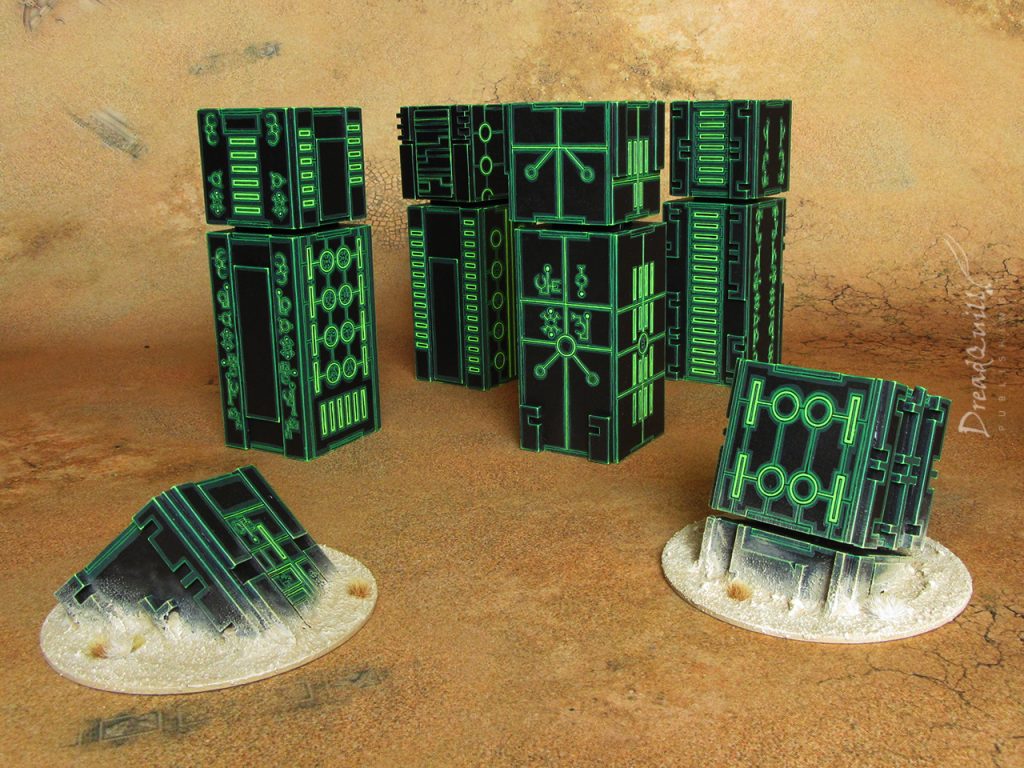
- Generous undercoat in matt black, two or three coats in some places. MDF is thirsty for paint, so I did a few passes (letting it dry in between) to make sure it was fully saturated.
- Thicc line of Caliban Green
- Thin line of Warpstone Glow
- Tickle the corners and fill the shapes with Scorpion Green.
The last paint is OOP, but moot green didn’t cut it. I wanted an acidic, almost fluro yellow/green for the final stage to give it a proper glow.
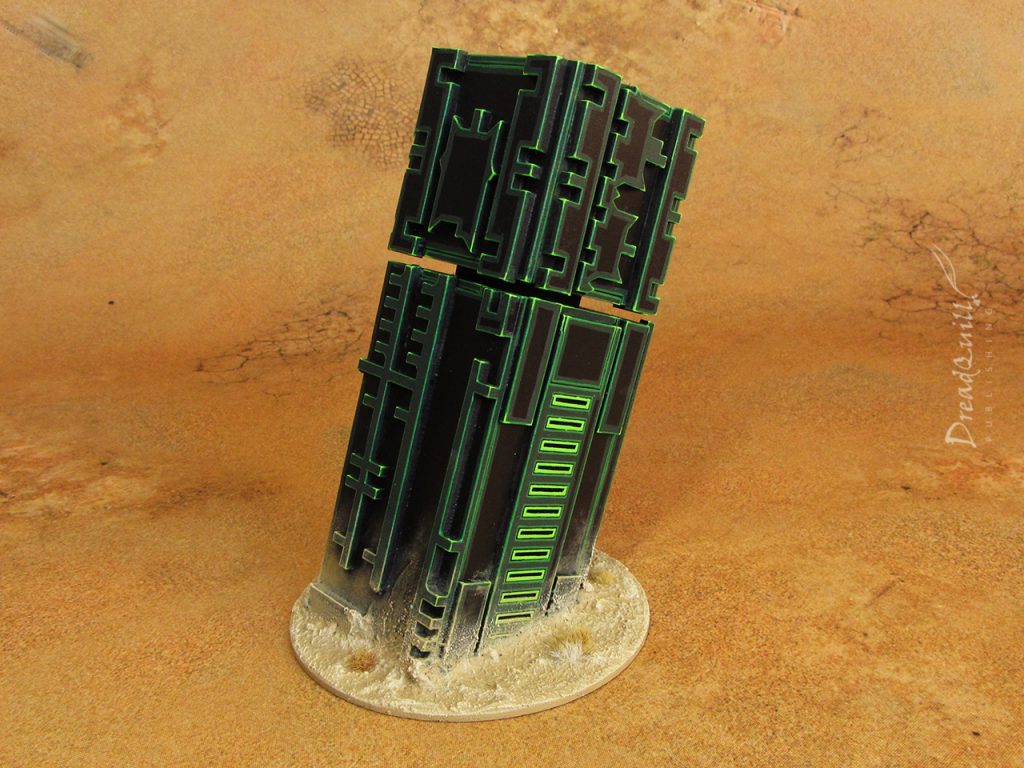
The bases were textured paint, then undercoated with Zandri Dust and drybrushed with Bleached Bone, topped with cheeky grass tufts.
The colours for the base were decided before I bought the battlemat, and given they’ll most likely be deployed against this background, I’m tempted to go back over the bases and darken them down a bit to match. A project for another time, I think!
Megalith
I mentioned previously about making a huge obelisk rather than multiple smaller ones, and it’s something I’m genuinely considering for the future. For now, my existing kits can be bundled together fairly convincingly to create weird looking structures.


And, naturally, it works great at 54mm scale. Perfect for Inquisitor!
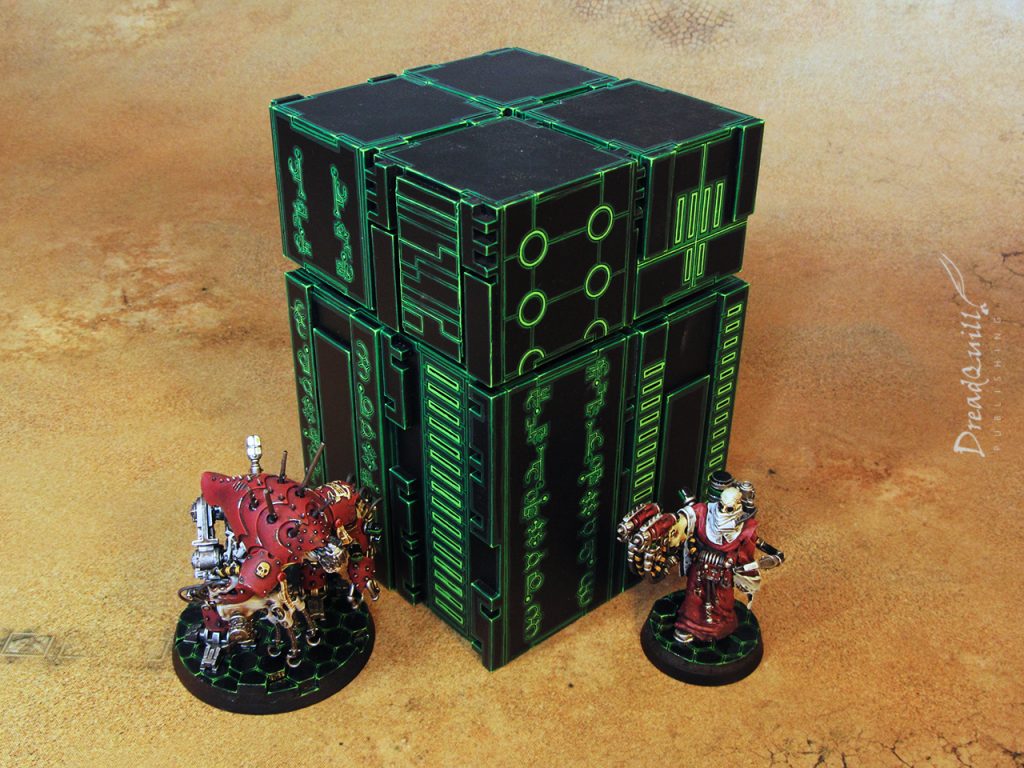
Standing Stone-Vation
Not much else to say on the painting – simple scheme, tedious to apply, but looks ace when it’s done. I bet it would have been so flippin’ easy to do with an airbrush too. Oh well, I know for next time!
On with the scale shots.
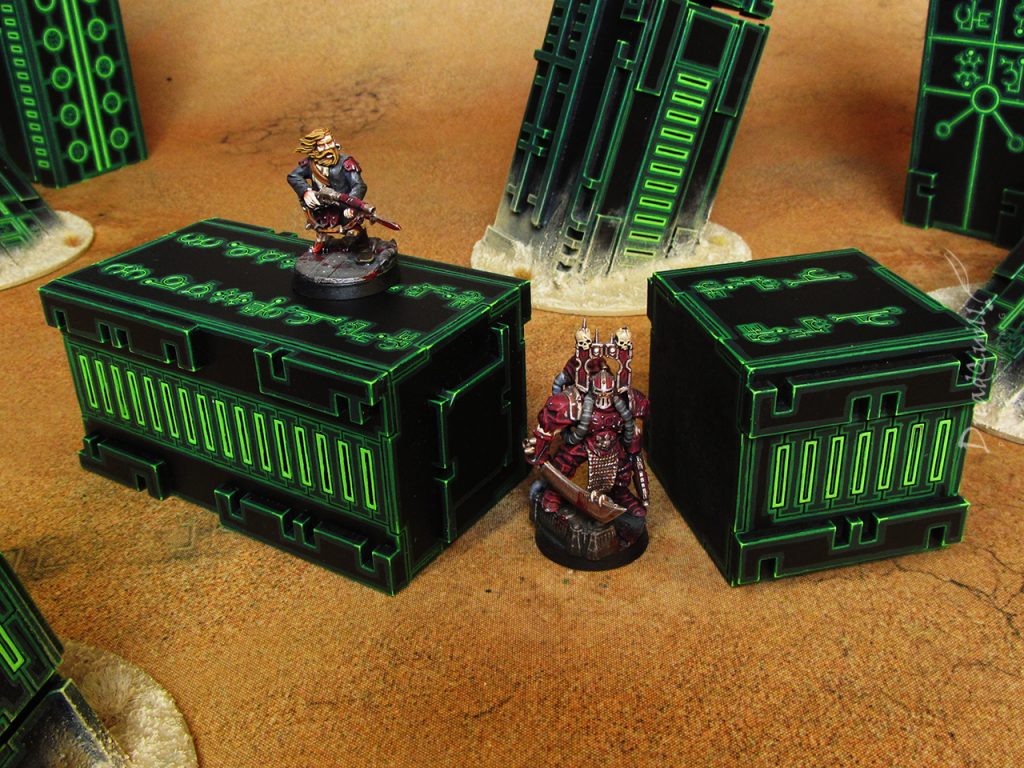
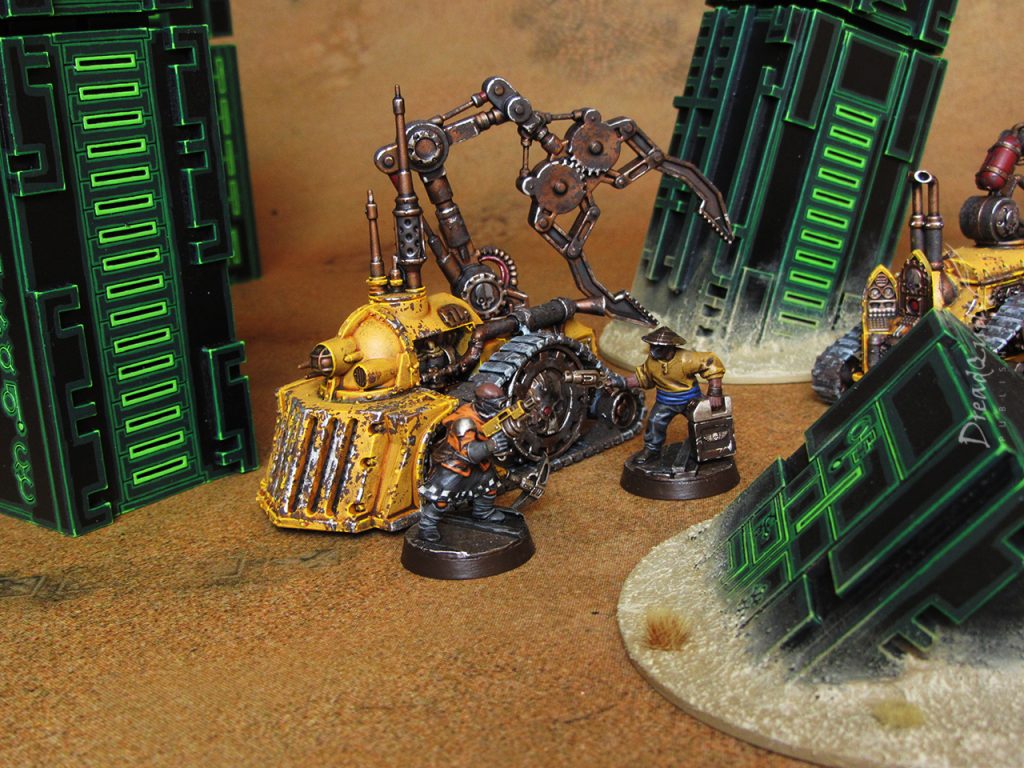
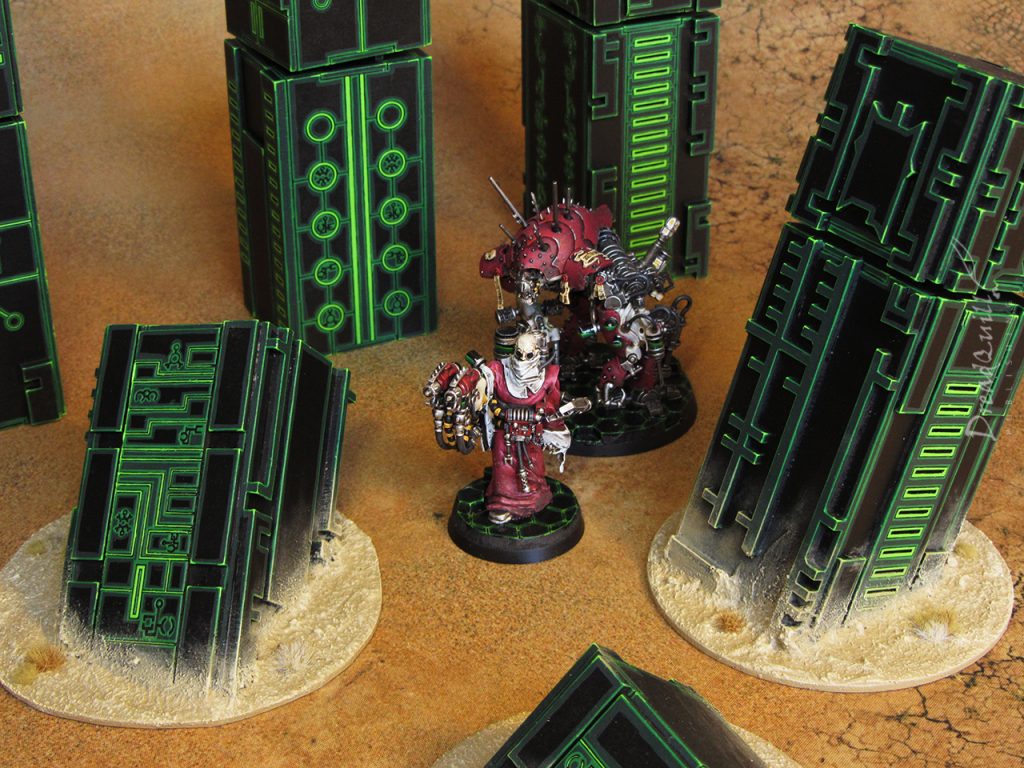
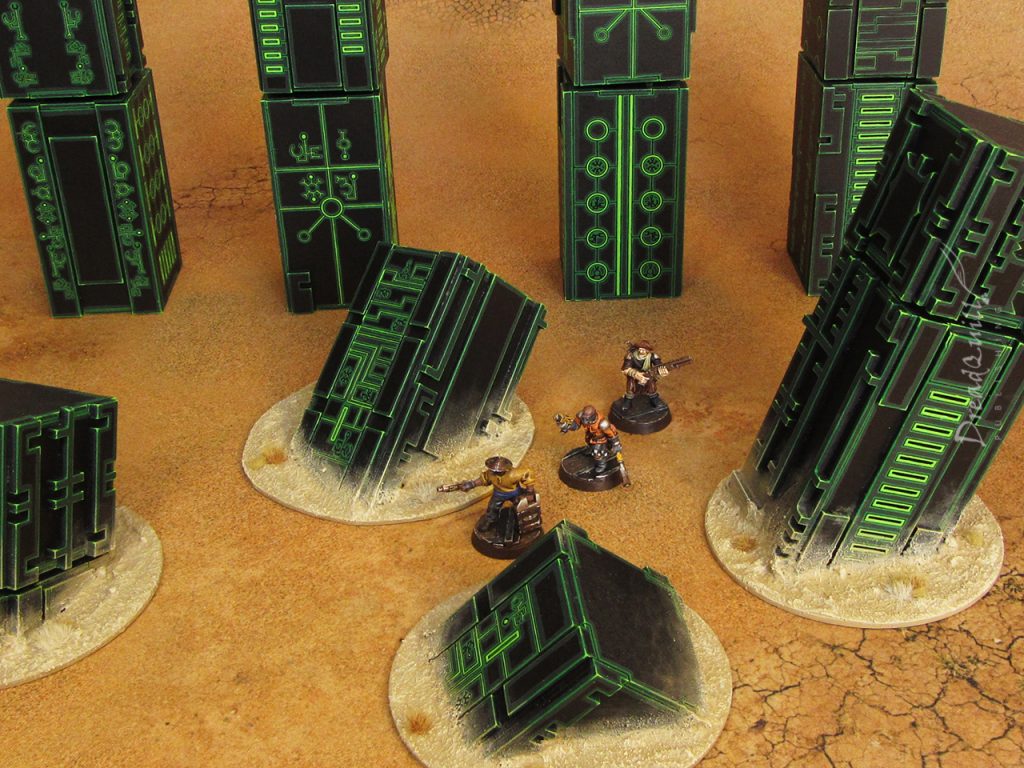
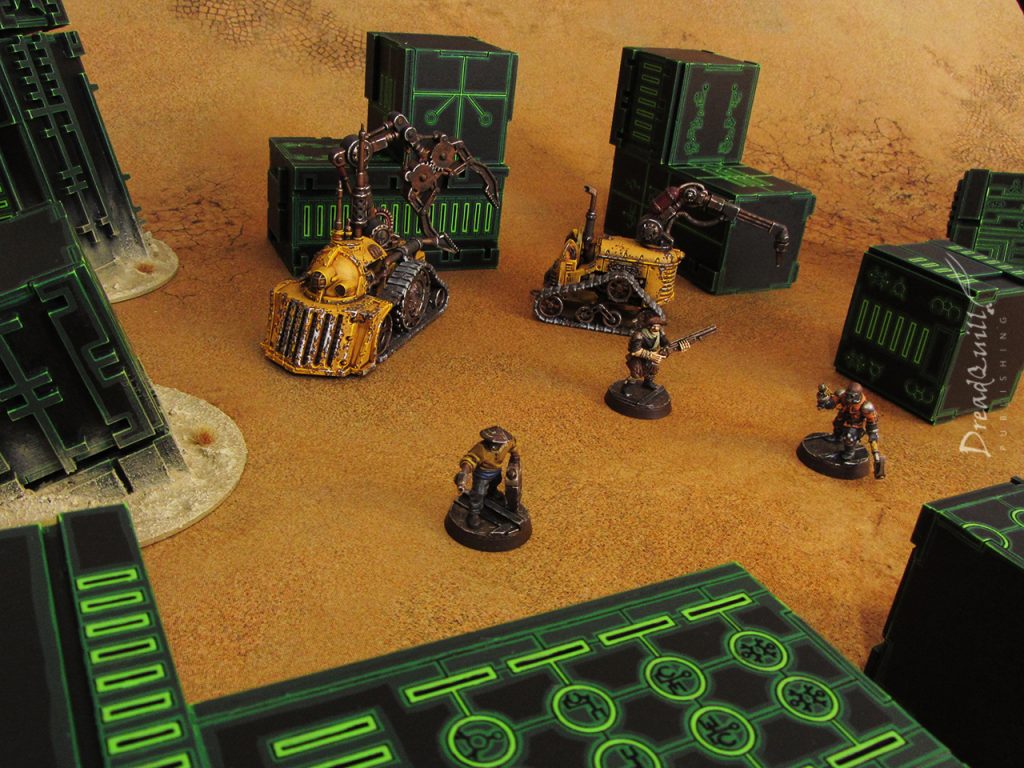
Wrapping up
What a wonderful little kit this is! Aside from some self-inflicted enthusiasm injuries, these have been a joy to build and paint. They’re ideal for all the games I play – Necromunda, Inquisitor, a few TTRPGs like Dark Heresy, Rogue Trader or Wrath and Glory, and they’re super convenient to store.
I’ve already got my eye set on some more obelisks for future projects, and I’ve got a large necron building from the same range that needs photographing, so watch this space!
I picked all these up from Wargaming Model Mods for under £20, so go toss come coins to a small independent business.
Let’s hear it for the humble obelisk!
